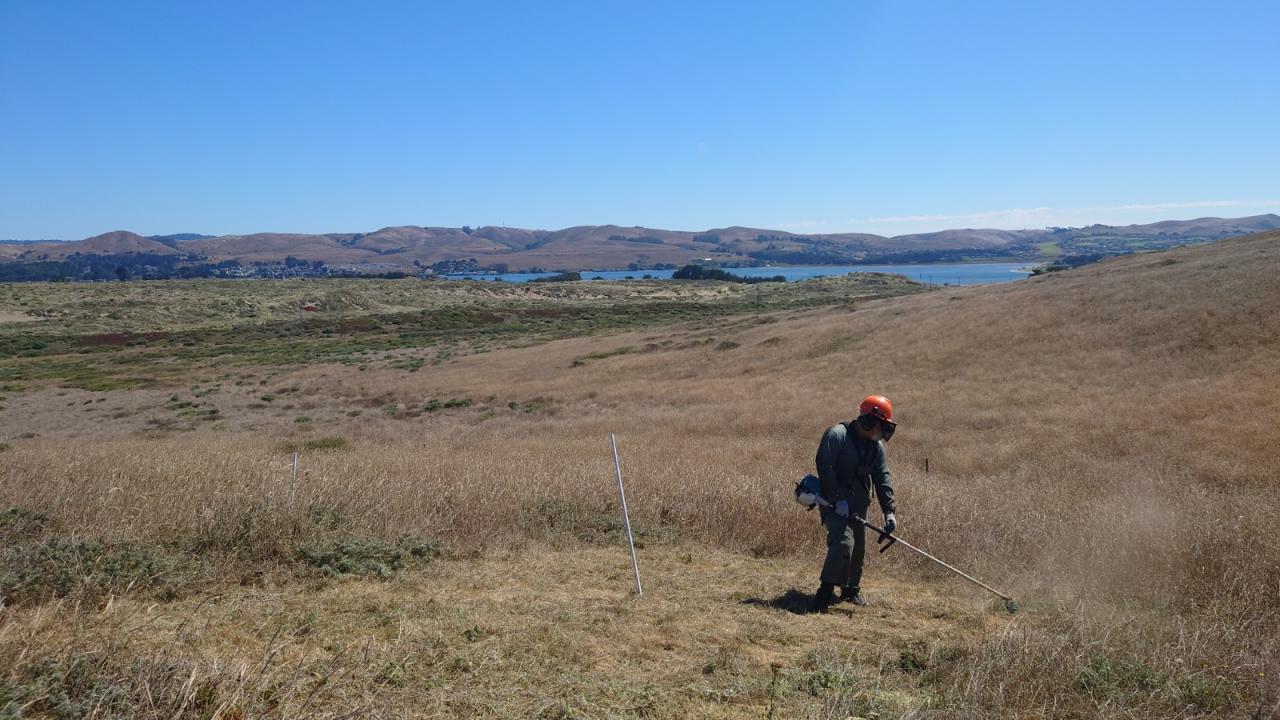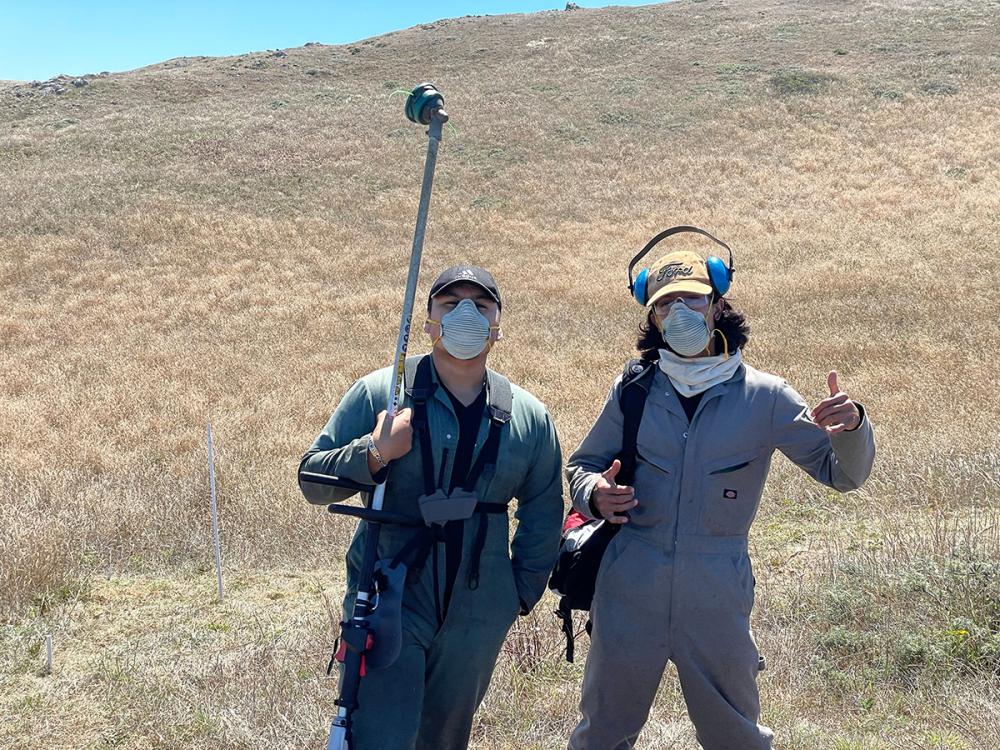
A day in the Life of a Land Steward
Recent SRJC graduate in Biology. Will go on to major Global Disease Biology Major at UC Davis under the College of Agricultural and Environmental Sciences. Planned career in medical research under a PhD program, and excited to learn about the science world.

Being a Land Steward is almost like being the camera man for a movie, or stage crew at a concert. The job and duties aren't always in the spotlight but they are highly critical in making a reserve run as it should. It is the job of the land steward to make sure the goals of a reserve are reached, and or maintained. In this internship I got to experience a glimpse of what it is like. I did removal of invasive species completely if possible, slowing the spread on already well established invaders, watering native grasses in the green house for restoration, and helping with experimental methods of removing a specific kind of invader.

I want to talk about my day helping Luis Morales, the land steward at the Bodega Marine Reserve conduct his experiment. Holcus lanatus (Velvet Grass) is a problematic invader at the reserve that is so well established, the mountains around the lab are an ocean of this grass. Removal by hand, at the roots and before it goes to seed is the most efficient way of removing an individual from an area and ensuring that specific individual won't regrow. This is unrealistic when you are dealing with miles and miles of this plant. Luis is working on an experiment to test whether other methods can work in efficient removal of this species. Mowing is a very quick way to remove a large area of grass quickly, but the downside is that the roots will remain in the ground and allow the plant to regrow later on. This experiment is designed to measure if repeated mowings within a year can result in a depletion of the plant's resources to the point that it won't regrow. So we set out to a mow a few plots that have received mowing treatments in order to collect this data. A set of 3 plots are in a block and there are 4 blocks total. One plot has a 1x per year mow, one is 2x and one is none as a control. It took the entire day, but we were able to use string trimmers to mow the designated ones in the same day. I learned to use a string trimmer that day as well which was a great learning experience. Previous data indicated that the frequency of Holcus measured from the plots that received the treatment does indeed appear to be significantly lower than the control. This gives hope that using repeated mowing on large swaths of Holcus can result in a lower amount of this problematic invader. Giving us a chance of actually and realistically being able to get rid of it on the reserve.
Want to learn more about the SRJC-BML Internship Program?
Visit the SRJC-BML Internship Program Website
You can also show your support for this program by making a gift.
